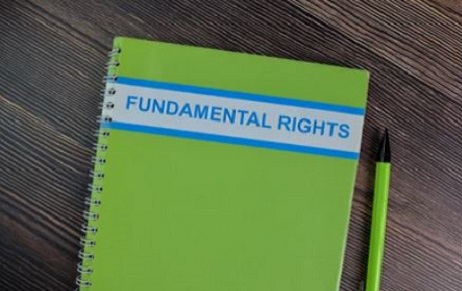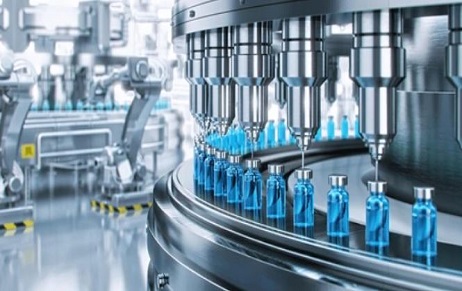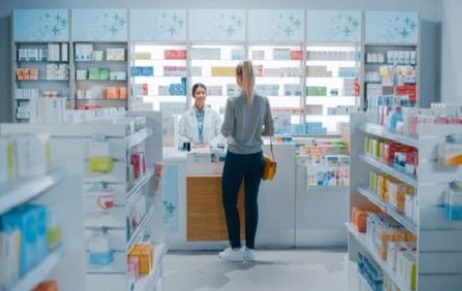Franklin D. Roosevelt (FRD) on different platforms, supported the Indian Freedom Struggle making the abovementioned…
Counterfeiting Medicines in India: why is there a need for IPR?
Counterfeit Medicines India and piracy is a massive global problem that affects practically every industry sector on the planet. India is no different, with widespread counterfeiting, piracy, and smuggling having serious economic, health, and safety ramifications in the country. Small businesses buy counterfeit technology or equipment, either deliberately or inadvertently, and incur unplanned costs in the form of breakage, business downtime, and unenforceable warranties. When the return on investment of a new product is rendered more unpredictable by unenforced intellectual property rights, foreign investors are hesitant to invest. Individual consumers’ health and safety are jeopardized when they are tricked into purchasing faulty vehicle components or unsafe pharmaceuticals.
Counterfeiting Medicines in India, according to the World Trade Organization (WTO), is the use of an unauthorized representation of a registered trademark on items for which the trademark is registered in order to fool the buyer into thinking he or she is buying genuine goods. In the context of such an issue, intellectual property protection plays a critical role in safeguarding pharmaceutical society’s rights in terms of patents, trademarks, and so on. Intellectual property rights refer to the ownership rights that people have over the ideas that they have developed in their heads. Its goal is to ensure fair competition and to defend customers’ interests as well as their innovative ideas.Another important purpose is to protect the consequences of investments in new technology development. The governmental and private sectors, as well as the Indian justice system, have made numerous steps to defend pharmaceutical society’s rights. The concerned authorities have taken a number of steps to establish the cause of the rise in counterfeit pharmaceuticals and how to combat the problem, including conducting surveys and other methods. The government has formed a number of boards to assist in the prohibition of such illicit actions.
TRADE-RELATED INTELLECTUAL PROPERTY RIGHTS (TRIPS) AND OTHER LEGISLATIVE FRAMEWORK
On January 1, 1995, all WTO members signed the agreement. The value of intellectual property is recognized in Indian law at all levels, including legislative, administrative, and judicial; however, the problem occurs when it is not adequately implemented. This agreement defines the conditions for the protection of the rights that are normally provided to authors for their ideas, with the primary goal of protecting their interests. The patents act of 1970, the copyright act of 1957, the trademarks act of 1999, the geographical indications of goods (registration and protection) act of 1999, and the new design legislation of 2000 define standards in the intellectual property categories.
Significance of Intellectual Property Rights against counterfeiting of Pharmaceuticals
In the pharmaceutical industry, intellectual property is used for more than just maximizing profits and keeping market share. Protection of intellectual property rights supports not only in the development and availability of new creative products, but also in the establishment of a robust and effective public health infrastructure. New pharmaceuticals cost a lot of money to create, and without research funding, new drugs would take longer to get a foothold in the market. Money is needed to manufacture goods that are both human and animal safe. The translation of creative ideas into possible new medications is aided by intellectual property protection. Patent and trademark systems aid authorities in evaluating the quality of drug items on the market, which is one of the benefits of intellectual property in this industry. These precautions allow authorities to take proactive measures to prevent the entrance of counterfeit drugs onto the market. Governments would struggle to assure the safety of pharmaceuticals crossing their borders without such protections. Another benefit of intellectual property is that it encourages pioneering enterprises to enter the market, resulting in a faster introduction of innovative products. The following categories can be used to categorize the importance: Pharmaceutical society inventions are protected; economic growth is encouraged; monopolies are limited; human health is protected, and so on.
The Indian judiciary plays a critical role in enforcing intellectual property rights rules and regulations. Under the High Court’s Act of 2016, the judiciary’s principal duty is to punish individuals who are found guilty of counterfeiting by establishing commercial courts, commercial divisions, and commercial appellate divisions. The weight and measure standard is a piece of legislation (packaged commodities) In 1977, regulations were enacted to govern the use of correct weighing and measuring tools in production, trade, and commerce in order to ensure that customers receive precisely the weight, measure, and number of items they ordered. There is also an anti counterfeiting trade agreement (ACTA), which is related to counterfeiting.
Novartis V. Union of India(Civil Appeal No. 2706-2716 of 2013)
Novartis filed a patent application for Gleevec, one of its drugs, under Section 3 of the Patents Act of 1970, citing it as an innovation. The Supreme Court refused their plea after a seven-year fight, citing the following reasons: To begin with, no new drug was created; simply discovering an existing drug would not qualify as creation. Second, the Supreme Court affirmed that, in addition to the usual requirements of novelty, inventive step, and application, the Indian Patent Act includes a new enhanced therapeutic efficacy test for claims that include incremental improvements to existing medications, which Novartis’ drug did not meet. This was a landmark ruling because the court saw through the technicalities to the fact that these companies were attempting to “evergreen” their patents and make them unavailable for a small fee.
Bayer Corporation and Ors. V. Union of India and Ors. (2014 SCC Online Bom 963)
The Bayer Corporation attempted to link the infringement of a patent with the approval of a Cipla drug for commercialization in this case. In the United Kingdom, the concept of a drug-patent link exists. In India, the Delhi High Court found that there is no method for linking medicinal patents, and that only the patent controller has the authority to define patent standards. It was also decided that a drug’s approval for sale does not imply that it infringes on a patent, and that the FDA has no jurisdiction over such problems.
Clinique Laboratories Llc and Anr. V. Gufic Ltd. and Anr.( CS (OS) No. 2607/2008)
Both the plaintiff’s and defendant’s registered trade marks were at issue in this dispute. It’s worth noting that, prior to filing the lawsuit, Clinique filed a cancellation petition with the Indian Register of Trade Marks, seeking cancellation of the defendant’s trade mark cliniq, and that, under the trademarks act of 1999, a suit is subject to a stay until the cancellation petition is finally decided by the competent court. Under section 124(5) of the act, the court has the authority to issue interlocutory orders, such as those providing interim jurisdiction, keeping accounts, appointing a receiver, or attaching any property. In this case, the court held that trademark infringement might be pursued against another registered proprietor of a similar or identical trade mark. A preliminary injunction banning defendant from using the registered trademark can be issued by the court while the litigation is stayed for a decision.
Conclusion
The government and other interested authorities have passed necessary rules, and they are constantly devising and planning strategies and plans to address the problem, but these strategies are not implemented in an effective and efficient manner. Audits should be conducted on a regular basis to check for any areas of concern that may arise throughout the manufacturing process of pharmaceuticals.There is one authenticity mark on the back or bottom of the product, and it should be present in every medicine because it will be easier for the general public to identify the authenticity of the product. For example, PharmEasy is an online medical supply store pharmacy that ensures the authenticity of medicines using a barcode system that you can access from your mobile phone. The Drug Controller General of India (DGI) is considering using a barcode system to verify the legitimacy of both imported and domestically manufactured drugs. Middle-income countries have been shown to be much more likely to engage in the production and distribution of counterfeit drugs, so authorized companies must collect all necessary data and information to aid in the resolution of such a problem, as the problem arises from an unorganized supply chain, particularly the functions performed by intermediaries.
Author: Anuja Saraswat – a student of B.A.LL.B (Hons.) from NMIMS Kirit P. Mehta School of Law (Mumbai), in case of any queries please contact/write back to us via email chhavi@khuranaandkhurana.com or contact us at IIPRD.



